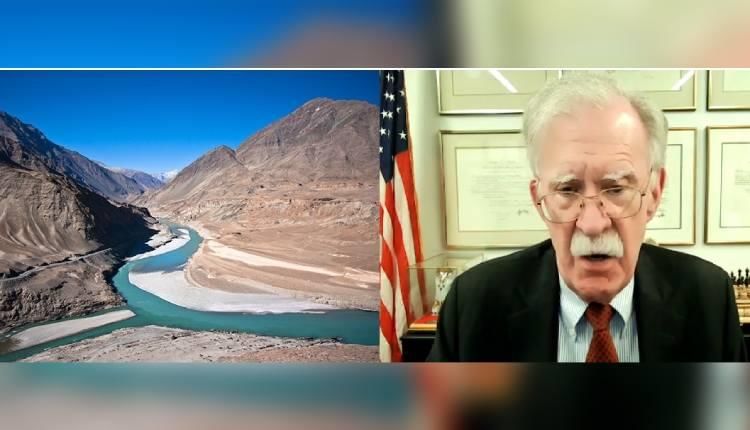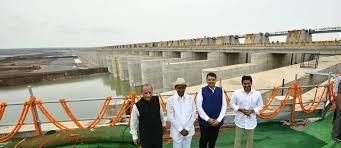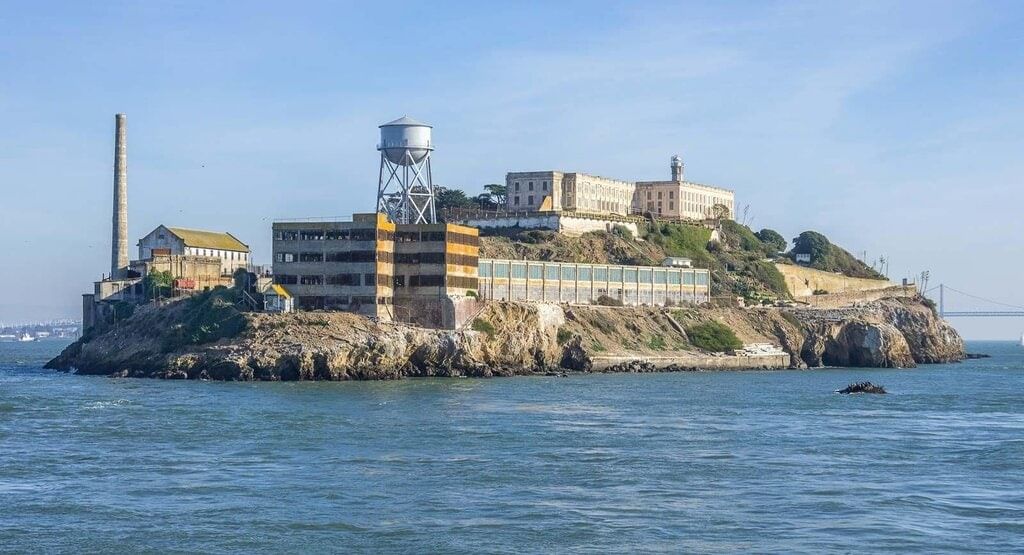UPSC Daily Current Affairs: 6th May 2025 | Current Affairs & Hindu Analysis: Daily, Weekly & Monthly PDF Download
GS2/International Relations
INS Sharda's Maiden HADR Exercise at Maldives
Source: Economic Times
Why in News?
INS Sharda, an offshore patrol vessel of the Indian Navy, has arrived at Maafilaafushi Atoll in the Maldives to participate in its inaugural Humanitarian Assistance and Disaster Relief (HADR) Exercise, taking place from May 4 to May 10, 2025. This exercise is a significant part of India’s strategic vision aimed at enhancing regional maritime cooperation and ensuring disaster preparedness within the Indian Ocean Region (IOR).
- The deployment of INS Sharda reflects India’s commitment to its "Neighbourhood First" Policy, emphasizing the strategic and cultural ties with the Maldives.
- This exercise is aligned with the "MAHASAGAR" vision, which focuses on mutual security and growth across regions.
- Key objectives include enhancing interoperability with the Maldives National Defence Force (MNDF) and conducting joint drills.
Additional Details
- MAHASAGAR Vision: This initiative, announced by the Prime Minister in Mauritius, reaffirms India’s role as a net security provider and first responder in the Indian Ocean.
- Objectives of the HADR Exercise:
- Conducting Search and Rescue (SAR) operations.
- Facilitating disaster response coordination and logistical support.
- Providing medical assistance and conducting training sessions for capacity building.
- Engaging local communities to raise awareness and prepare for disaster resilience.
This exercise not only strengthens India's strategic ties with the Maldives but also enhances overall regional collaboration in disaster management and maritime security.
GS1/Geography
Key Facts about Spain
Source: BBC
Why in News?
A recent massive power outage across the Iberian Peninsula, which includes Spain and Portugal, has raised concerns regarding the integration of solar and wind energy into national power grids.
- Spain is located in Southwestern Europe, covering nearly 82% of the Iberian Peninsula.
- It shares borders with Portugal, France, Andorra, and Gibraltar.
- Spain is surrounded by the Mediterranean Sea, the Bay of Biscay, and the Atlantic Ocean.
- The Pyrenees Mountains separate Spain from France.
- Spain features significant plateaus and plains, including the Meseta Central and the Andalusian Plain.
- Important rivers include the Ebro, Tagus, Douro, and Guadalquivir.
- The Tabernas Desert in Andalusia is Europe's only true desert.
- Spain has several important islands, notably the Balearic and Canary Islands.
Additional Details
- Geographical Location: Spain is the dominant territorial entity within the Iberian Peninsula, influencing both cultural and climatic characteristics.
- Mountain Ranges: The Pyrenees Mountains not only serve as a natural barrier but also affect the weather patterns in the region.
- Rivers: Major rivers like the Ebro flow into the Mediterranean, while the Tagus is shared with Portugal, highlighting Spain's interconnected water systems.
- Desert Features: The Tabernas Desert is noted for its unique environmental conditions, contributing to Spain’s diverse ecosystems.
- Islands: The Balearic Islands are known for their tourism appeal, while the Canary Islands are strategically important, located off the northwest coast of Africa.
In summary, Spain's geographical features, including its mountains, rivers, and islands, play a critical role in its cultural identity and environmental diversity. The recent power outage highlights the ongoing challenges in integrating renewable energy sources within the national power grid.
GS2/International Relations
Organization of Islamic Cooperation (OIC)
Source: NDTV
Why in News?
The Organization of Islamic Cooperation (OIC) has recently expressed its concerns regarding the escalating tensions between India and Pakistan, urging both nations to exercise restraint and engage in dialogue.
- The OIC is the second largest intergovernmental organization globally, after the United Nations.
- It consists of 57 member states across four continents.
- Founded on 25 September 1969, following the arson of Al-Aqsa Mosque in Jerusalem.
- Headquartered in Jeddah, Saudi Arabia, with official languages being Arabic, English, and French.
Additional Details
- Objectives: The OIC aims to preserve Islamic values, defend the sovereignty of its member states, and contribute to international peace and security.
- Main Bodies:
- Islamic Summit Conference (ISC): The supreme authority that meets every three years to establish the OIC's policies.
- Council of Foreign Ministers (CFM): Meets annually to review the implementation of decisions made by the ISC.
- General Secretariat: The executive body responsible for executing decisions from the ISC and CFM.
- The OIC collaborates with international bodies, including various UN agencies, to address issues relevant to its member states and the global Muslim community.
The OIC serves as the collective voice of the Muslim world, striving to safeguard their interests in economic, social, and political spheres.
GS3/Environment
Redrawing the Not-So-Pretty Energy Footprint of AI
Source: The Hindu
Why in News?
The rapid evolution of Generative Artificial Intelligence (AI) has transformed numerous industries, making complex creative and analytical tasks remarkably simple and fast. However, this technological advancement comes with a significant downside: the substantial energy consumption required to operate these AI systems, raising urgent concerns about their environmental impact.
- AI systems consume vast amounts of energy, primarily sourced from fossil fuels.
- The training of large AI models emits significant carbon dioxide, comparable to five cars over their lifespans.
- Transparency in energy usage reporting is essential for accountability in AI companies.
- Small Modular Reactors (SMRs) may provide a sustainable energy solution for AI operations.
Additional Details
- Environmental Impact: AI services are not energy-neutral; each interaction requires extensive computational power from data centers, which are heavily reliant on electricity generated from non-renewable sources.
- Training Costs: The process of training large-scale AI models is resource-intensive, equating to significant carbon emissions that contribute to climate change.
- Need for Transparency: Companies should disclose their total energy consumption, sources of energy, and sustainability measures to encourage accountability.
- Small Modular Reactors (SMRs): These advanced nuclear reactors offer a compact and flexible energy solution, providing continuous, zero-carbon energy that could significantly reduce the environmental footprint of AI.
As the future of AI continues to develop, it is crucial to implement strategies that address its environmental impact. Emphasizing transparency, regulatory frameworks, and innovative solutions like SMRs can help ensure that technological progress aligns with sustainable practices, enabling AI to remain a beneficial tool without compromising the planet's health.
GS3/Economy
Hydrogen versus Battery: The Cost of Clean Public Transport
Source: World Economic Forum
 Why in News?
Why in News?In India, a study published in The Lancet revealed that between 2008 and 2019, high levels of PM2.5 air pollution contributed to approximately 30,000 deaths annually in 10 major cities, accounting for around 7.2% of total deaths in those areas.
- High mortality rates due to PM2.5 exposure in urban areas.
- Fuel Cell Electric Vehicles (FCEVs) offer advantages over Battery Electric Vehicles (BEVs) for long-distance travel.
- India's electric vehicle (EV) market is evolving with government support and initiatives.
Additional Details
- High Mortality Due to PM2.5 Exposure: Short-term exposure to fine particulate matter (PM2.5) resulted in nearly 30,000 deaths annually across 10 major Indian cities from 2008 to 2019.
- City-Specific Impact – Mumbai: Mumbai noted the highest number of PM2.5-related deaths, with approximately 5,100 deaths each year.
- Significant Share of Urban Deaths: Pollution-related deaths represented a substantial portion of urban fatalities, indicating a critical public health issue linked to air quality.
- Longer Driving Range: FCEVs provide a greater driving range compared to BEVs due to the higher energy density of hydrogen fuel, enabling travel between 500–700 km on a single tank.
- Quick Refuelling Time: FCEVs can be refuelled in just 5–15 minutes, akin to traditional vehicles, which is advantageous for long-haul operations.
- Cost Convergence Expected by 2030: Experts anticipate that the initial purchase cost of hydrogen FCEVs will match that of BEVs around 2030 due to technological advancements and mass production efficiencies.
The findings underscore the urgent need for effective public health strategies to combat air pollution in urban India and highlight the potential of FCEVs in enhancing the sustainability of public transport solutions.
GS3/Environment
Microplastics Disrupting the Ocean’s Carbon Cycle
Source: DTE
Why in News?
A recent study published in Nature highlights the pervasive infiltration of microplastics in the ocean, significantly disrupting the planet's biogeochemical and carbon cycles.
- Microplastics, ranging from 1 to 100 micrometres, dominate the ocean's water column, particularly in subsurface layers, in contrast to larger plastic fragments (100-5,000 micrometres) which are found near the surface.
- Subsurface microplastics have been detected at depths of up to 100 metres within ocean gyres, the rotating currents that trap and accumulate debris.
- The study compiled data from 1,885 ocean stations between 2014 and 2024, focusing on layers 50 cm below the surface.
- Over 56 types of polymers were identified, with buoyant polymers, commonly used in global plastic production, being the most prevalent.
- Fishing gear, particularly nylon and polyester nets, was identified as a major contributor to deep-sea microplastics.
- Many plastics sampled dated back to the 20th century, indicating their long degradation timelines.
- Atmospheric deposition of microplastics contributes between 0.013 and 25 million tonnes annually, with polyester being the most common airborne microplastic.
Additional Details
- Allochthonous Carbon: This term refers to carbon originating from external sources, not produced within the ecosystem. In oceans, plastics serve as a significant source of allochthonous carbon, stemming from land-based human activities.
- Microplastics introduce measurable carbon mass into marine systems, altering natural carbon ratios in ocean layers. This distortion impacts the marine carbon pump by affecting the flow and composition of particulate organic carbon (POC).
- Plastic-derived carbon lacks radiocarbon, which can lead marine POC samples to appear approximately 420 years older.
- The presence of microplastics disrupts microbial activity, nutrient cycling processes like nitrification and denitrification, and the decomposition of organic matter.
- Marine microbes ingest plastic-derived carbon, influencing food chains and altering biological processes at the base of marine ecosystems.
In summary, the infiltration of microplastics into ocean ecosystems poses significant threats to carbon cycling and marine biodiversity, necessitating further research and action to mitigate these impacts.
UPSC 2012
What would happen if phytoplankton of an ocean is completely destroyed for some reason?
- 1. The ocean as a carbon sink would be adversely affected.
- 2. The food chains in the ocean would be adversely affected.
- 3. The density of ocean water would drastically decrease.
Options: (a) 1 and 2 only* (b) 2 only (c) 3 only (d) 1, 2 and 3
GS2/International Relations
The Messaging from Putting the IWT in ‘Abeyance’
Source: The Hindu
 Why in News?
Why in News?On April 24, India announced the suspension of the Indus Waters Treaty (IWT) of 1960, stating that it would hold the agreement in abeyance until Pakistan halted its support for cross-border terrorism. This significant shift follows the Pahalgam terror attack of April 22 and marks a departure from India’s historically cautious approach to the IWT, which has been a cornerstone of India-Pakistan relations.
- India's use of the term 'abeyance' suggests a temporary suspension of the IWT, raising legal and diplomatic questions.
- The IWT requires mutual consent for modifications or terminations, complicating India's unilateral decision.
- India's actions may jeopardize Pakistan's water security by withholding critical data and notifications.
Additional Details
- Legal Context: The term 'abeyance' lacks grounding in international law, as neither the IWT nor the Vienna Convention on the Law of Treaties (VCLT) of 1969 recognizes it. India is not a party to the VCLT, while Pakistan, a signatory, has not ratified it.
- Articles XII(3) and (4) of the IWT: These articles stipulate that any changes to the treaty require mutual consent, which is unlikely given current diplomatic tensions.
- India's choice of 'abeyance' reflects a domestic strategy to respond to terrorism while signaling frustration with Pakistan's inaction.
- Potential risks include legal challenges in international courts and environmental concerns from hastily implemented water infrastructure projects.
India's decision to hold the Indus Waters Treaty in abeyance represents a pivotal moment in its bilateral relationship with Pakistan. While it demonstrates a firmer stance against terrorism, it also presents complex legal, environmental, and strategic challenges. The effectiveness of this strategy will depend on India's ability to navigate these challenges while maintaining its commitment to international norms and ecological sustainability.
GS2/Polity
Jharkhand Completes OBC Data Collection for Urban Local Body Quotas under Supreme Court’s “Triple Test”
Source: The Hindu
Why in News?
Jharkhand has successfully completed the process of data collection to assess the reservation for Other Backward Classes (OBCs) in Urban Local Bodies (ULBs). This effort complies with the Supreme Court's mandated “triple test” criteria, marking a crucial advancement in the implementation of constitutionally valid OBC reservations in urban governance.
- The data collection process is essential for determining OBC quotas in Jharkhand's urban local bodies.
- This initiative is a significant step towards ensuring fair representation for OBCs in local governance.
- Jharkhand's approach could serve as a model for other states in implementing similar reservations.
Additional Details
- Triple Test:This legal framework was established by the Supreme Court in the case of Vikas Kishanrao Gawali vs State of Maharashtra (2021) to ensure that reservations are fair, evidence-based, and constitutionally compliant. It includes:
- Constitution of a dedicated commission to investigate OBC backwardness.
- Recommendation-based reservation to determine appropriate quotas.
- A ceiling on total reservations, ensuring they do not exceed 50% of total seats.
- OBC Commission Establishment: The Jharkhand OBC Commission was formed in June 2023 to execute this initiative, drawing insights from Madhya Pradesh’s implementation of the triple test.
- Data Collection Timeline: The data collection occurred between December 2023 and March 2024, with a recent submission to the Commission, despite some districts missing their deadlines.
- Verification Process: Collected data will be analyzed by institutions such as IIM and XLRI to ensure a thorough socio-economic assessment before the final report is submitted to the state government.
- OBC Population Insights:OBCs make up approximately 50% of Jharkhand's population, divided into two categories:
- BC-I: More socially and educationally backward, comprising 127 castes.
- BC-II: Relatively better-off, including around 45 castes.
The successful implementation of the Triple Test in Jharkhand could establish a precedent for other states, promoting data-driven and constitutionally valid OBC reservations in local governance. This approach aims to bolster grassroots democracy and enhance the inclusivity and representational equity within India’s urban political landscape.
GS3/Economy
Kaleshwaram Lift Irrigation Project (KLIP)
Source: Indian Express
 Why in News?
Why in News?The National Dam Safety Authority (NDSA) has reported significant structural and operational defects in Telangana's Kaleshwaram Lift Irrigation Project (KLIP), noting "irreparable damage" to three vital barrages, including the Medigadda barrage.
- KLIP is the world's largest multi-stage lift irrigation project, inaugurated on June 21, 2019.
- The project aims to irrigate 45 lakh acres, provide drinking water to Hyderabad, and support industrial usage.
- It plans to lift a total of 240 TMC of water from various sources.
- The estimated cost ranges from ₹80,000 crore to ₹1.2 lakh crore.
Additional Details
- Infrastructure: The project includes 7 links, 28 packages, a 500 km span, an 1800+ km canal network, 20 reservoirs, and Asia's largest pump house located at Ramadugu.
- Recent Issues: In October 2023, Pillar No. 20 of the Medigadda barrage sank, leading to flood-related damages. The April 2024 NDSA report identified structural distress in all three barrages due to inadequate design and safety protocols.
- The state faces an annual burden of ₹16,000 crore in loan and interest repayments, raising concerns about the project's sustainability and effectiveness.
The Kaleshwaram Lift Irrigation Project, while ambitious in its goals, is now under scrutiny due to significant operational challenges and financial implications, raising questions about its viability as a long-term solution for irrigation and water supply in the region.
Back2Basics: Godavari River
- The Godavari, known as Dakshin Ganga, is the largest peninsular river in India.
- It originates from Trimbakeshwar in Maharashtra and flows for 1465 km to the Bay of Bengal.
- The river basin spans multiple states, including Maharashtra, Telangana, Andhra Pradesh, Chhattisgarh, Odisha, and parts of Madhya Pradesh, Karnataka, and Puducherry.
- It has significant tributaries such as Pravara, Manjira (right bank) and Purna, Pranhita, Indravati, Sabari (left bank).
Question for UPSC 2024:
Recently, the term “pumped-storage hydropower” is actually and appropriately discussed in the context of which one of the following?
- (a) Irrigation of terraced crop fields
- (b) Lift irrigation of cereal crops
- (c) Long duration energy storage*
- (d) Rainwater harvesting system
GS1/History & Culture
Alcatraz Island: A Historical Overview
Source: CNN
 Why in News?
Why in News?Recently, the US President instructed his administration to undertake the rebuilding and expansion of Alcatraz Island, a notable prison that has remained closed for over 60 years. Located on a remote island off the coast of San Francisco, Alcatraz has a rich history worth exploring.
- Alcatraz Island, also known as 'The Rock', spans 22 acres (9 hectares) in San Francisco Bay.
- It was sold to the U.S. government in 1849 and housed the first lighthouse on the California coast in 1854.
- The island transitioned from a military installation to a federal prison between 1934 and 1963.
- Alcatraz is now part of the Golden Gate National Recreation Area and attracts numerous tourists.
Additional Details
- Historical Significance: Alcatraz was initially a military prison, designated as the Pacific Branch of the U.S. Military Prison in 1907. The military abandoned the island in 1933, and it became a federal prison until its closure in 1963.
- Prison Capacity: The facility was designed to hold over 330 inmates, though it typically housed around 260 prisoners at any given time.
- The decision to close the prison was primarily due to the high cost of maintenance.
- In 1972, Alcatraz was integrated into the Golden Gate National Recreation Area and has since become a popular destination for visitors interested in its storied past.
In conclusion, Alcatraz Island stands as a significant historical landmark that reflects the evolution of American penal institutions and continues to draw interest as a site of historical education and tourism.
GS2/Governance
India to Showcase SVAMITVA Scheme at World Bank Land Conference
Source: Economic Times
Why in News?
India's SVAMITVA Scheme will be presented at the World Bank Land Conference, emphasizing its contribution to land governance reform, climate action, and rural empowerment.
- The SVAMITVA Scheme was launched on 24th April 2020 by the Ministry of Panchayati Raj.
- It aims to provide legal ownership of residential properties in rural areas through drone and geospatial technology.
- This is a Central Sector Scheme, fully funded by the Government of India.
- The initiative collaborates with the Ministry of Panchayati Raj, state Revenue Departments, and the Survey of India as the technical partner.
Additional Details
- Property Cards: These cards are issued to rural households, helping to reduce land disputes and promote financial inclusion. Examples include Gharauni in Uttar Pradesh and Adhikar Abhilekh in Madhya Pradesh.
- Key Features:
- Utilization of drone technology for high-resolution mapping of villages ensuring transparency and accuracy.
- Implementation of a Continuous Operating Reference System (CORS) for mapping precision up to 5 cm.
- The Gram Manchitra platform aids in village-level development planning, disaster risk mitigation, and infrastructure management.
- The scheme has the potential to unlock land value estimated at USD 1.162 trillion, formalizing property ownership and enabling its use as a financial asset.
- It encourages collaboration between central and state governments, aiming to reduce litigation and enhance rural governance.
In conclusion, the SVAMITVA Scheme plays a crucial role in transforming rural land governance in India, promoting legal ownership and enhancing the socio-economic status of rural households.
|
53 videos|5389 docs|1140 tests
|
FAQs on UPSC Daily Current Affairs: 6th May 2025 - Current Affairs & Hindu Analysis: Daily, Weekly & Monthly
| 1. What was the significance of INS Sharda's maiden HADR exercise in the Maldives? |  |
| 2. What are the key features of the Kaleshwaram Lift Irrigation Project (KLIP)? |  |
| 3. How does microplastics affect the ocean's carbon cycle? |  |
| 4. What is the role of the Organization of Islamic Cooperation (OIC) in international relations? |  |
| 5. What are the comparative advantages of hydrogen fuel versus battery electric systems for public transport? |  |
















